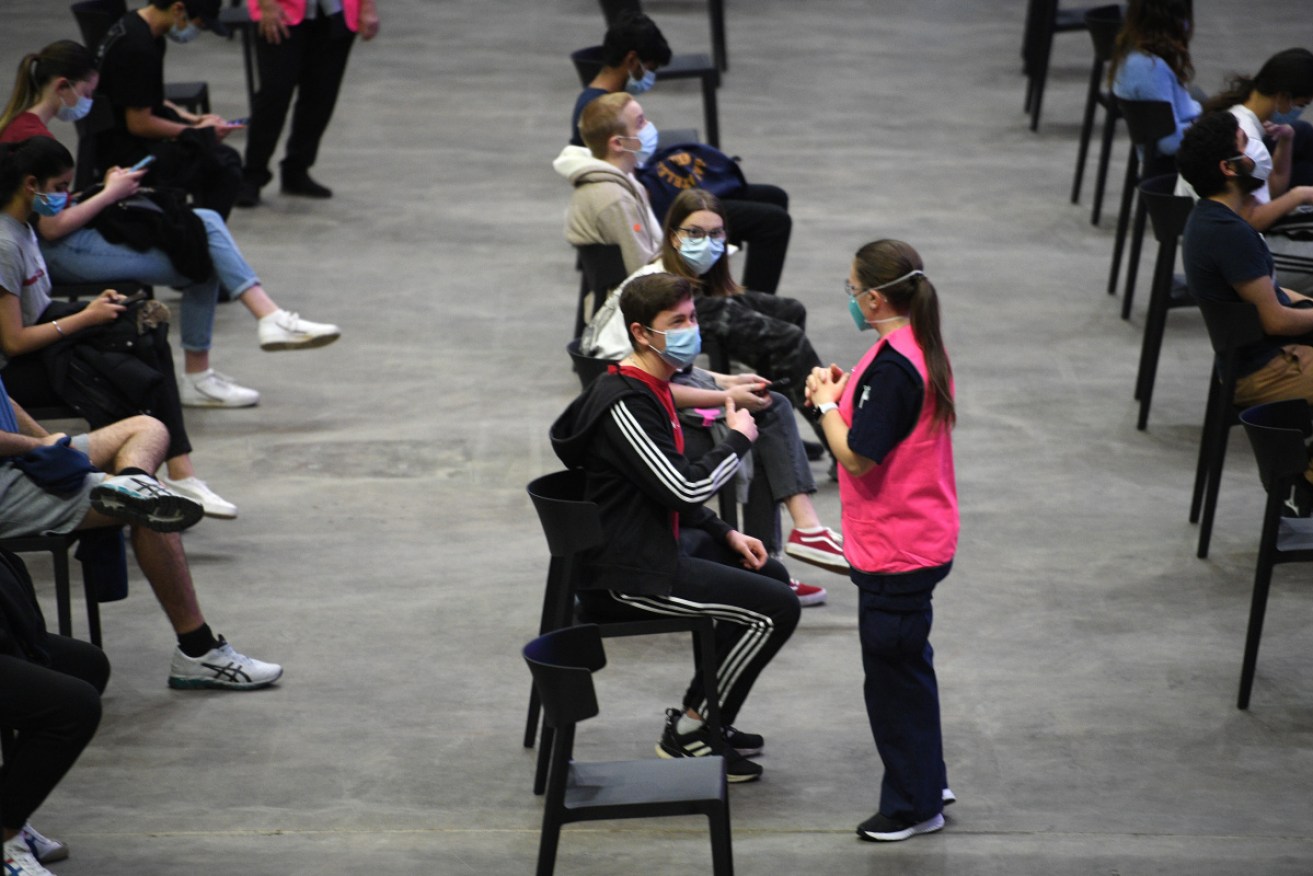Why improving ventilation is so important before the return to school


A recent study suggests the number of COVID infections could be 39 per cent lower in schools with improved ventilation. Photo: AAP
With Year 12 students in New South Wales returning to schools on October 25 and discussions over a quicker return under way in Victoria, scientists are once again talking up the need for improved ventilation.
A recent study of US schools found the incidence of COVID-19 was 39 per cent lower in schools with improved ventilation compared to the control subject.
But Australian scientists and epidemiologists argue authorities have so far paid too little attention to minimising the spread of COVID-19 through improvements to indoor air quality – prompting calls for more research and interventions from the federal government.
Dr Robyn Schofield, an atmospheric chemist from the School of Earth Sciences at the University of Melbourne, said cleaner air could drastically reduce infection rates and prevent airborne transmission.
Mounting evidence shows the coronavirus spreads through aerosols and larger droplets, and particularly so in closed and crowed spaces.
But Dr Schofield said indoor air quality had not received enough attention and “isn’t subject to any sort of compliance or regulatory efforts”.
“Our buildings are primarily built for thermal comfort and for very little else really,” she told The New Daily.

Scientists suggest increased ventilation could be more important than mask wearing in the fight against COVID-19. Photo: Getty
Measuring air quality
Scientists have no way of detecting airborne diseases within aerosols.
But Dr Schofield said they could measure the level of carbon dioxide in the air and use this as a proxy for air and ventilation quality.
The more carbon dioxide present, the worse the ventilation and the higher the risk of aerosol transmission.
Scientists told The New Daily anywhere between 400 parts per million (ppm) and 800ppm of carbon dioxide (CO2) within a space were regarded as acceptable CO2 levels. The closer to 400ppm, the better.
But the air in many public buildings, offices, apartments and schools in Australia has twice that amount.
RMIT University investigations into air quality at five Victorian schools found “very poor ventilation” levels with up to 5000ppm in classrooms.
Too much CO2
New and old buildings in Australia use mechanical ventilation like HVAC (heating, ventilation and air-conditioning) and split systems, or mixed-mode ventilation, to compensate for a lack of cross or natural ventilation.
“Commercial public buildings in Victoria have a requirement to meet 850ppm of CO2, as a design standard, but that’s never checked,” Dr Schofield said.
“We are currently about 420 parts per million of CO2 outside at the moment … for every 400 above that, say 800 ppm, that means 1 per cent of the air that you’re breathing in is CO2.”
Lidia Morawska is a distinguished professor in the University of Queensland’s School of Earth and Atmospheric Sciences.
She said anything exceeding 600ppm is “becoming a problem” in spreading infections.
“If it starts exceeding 550 to 600ppm I’d say there’s becoming a problem because there’s a combination of CO2 and potentially a virus,” Professor Morawska told The New Daily.
“If I see 800ppm I would already be worried about infection transmission.”

Schools across the world are at the centre of ventilation studies. Photo: AAP
More research needed
Dr Mahsan Sadeghi is a postdoctoral research fellow at UNSW as well as a professional architect with a PhD in ventilation systems.
Given the growing evidence pointing to aerosol transmission of COVID-19, Dr Sadeghi said there was an urgent need for more research into ventilation in Australia.
“Before we go on with these implementations and considerations we need to do research … what the required circulation rate to minimise the risk of airborne disease is, we don’t know,” she said.
“There have been lots of studies done all around the world, in the US, in Europe. The research is motivating this idea that we need effective ventilation but still we need a number.
“The CO2 meters show us the ventilation is poor, but they do not show us the air movement rate or the air pressure rate.
“What we need is a standard for air movement rate or air pressure rate.”
How Australians can improve their ventilation
Dr Schofield said monitoring the filter within Australian air-conditioning and heating systems was key to improving ventilation.
The higher the rate of refreshing within the system, the better the quality of air.
She added it was necessary to use a filter designed for that particular system and that even the highest-grade filter would slow airflow substantially if used in the wrong system.
“The current advice is you mostly bring in outside air, you don’t rely too much on those filters, but the filters should be well serviced,” she said.
“Hospitals are designed to get about six air changes per hour at least, they are mandated to have that. Most of our public buildings will be probably under two.”
Professor Morawska said opening a window was a simple example of how to improve ventilation, but noted in many public buildings and apartments this was not possible.

Scientists say we have ways of improving ventilation in homes and workplaces. Photo: Getty
She said more government regulations and public information would empower people to demand measurements of carbon dioxide and other ventilation alternatives.
Dr Schofield and Professor Morawska agreed Australians should buy carbon dioxide monitors or sensors for testing their air and select air purifiers to reduce the risk of airborne transmission.
But they said it should be up to the Australian government – not the public – to provide clear measurements of CO2, and potentially infectious aerosols, in public buildings.
“Carrying the CO2 meters – that’s building individual awareness. But in the end, it shouldn’t be individual responsibility to check the ventilation in all the venues. This should really be displayed,” Professor Morawska said.
“This is something to be done now, and done immediately.”
High levels of carbon dioxide are extremely dangerous, but can also be harmful at lower levels.
“CO2 is linked to cognitive performance and so there’s a huge benefit beyond airborne transmission such as flu, beyond COVID, to bring these CO2 levels down,” Dr Schofield said.
“At 1000ppm, you get a 15 per cent loss in your simple decision-making. But a 50 per cent loss in your complex decision-making.
“If we improve our workplaces and our schools, given that we spend 90 per cent of time inside, it’s going to be a big win.”








